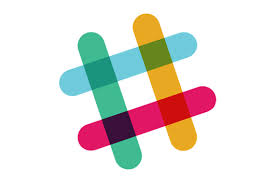Is Slack The New Email?
Don't forget about instant messaging and collaboration platforms in your ediscovery planning.
 In the last three years, I’ve seen a tremendous rise in the use of instant messaging and collaboration platforms across all sizes of businesses and firms. Email is “slow” and threads are hard to follow, particularly among multiple people. So many teams, all across different areas of specialty, have turned to these tools to communicate in real time.
In the last three years, I’ve seen a tremendous rise in the use of instant messaging and collaboration platforms across all sizes of businesses and firms. Email is “slow” and threads are hard to follow, particularly among multiple people. So many teams, all across different areas of specialty, have turned to these tools to communicate in real time.
If you are not familiar with these tools, or you aren’t including them in your ediscovery planning, here’s what you need to know about the tools, how they are used, and what you need to know about them for ediscovery purposes.
What are these platforms?

Legal AI: 3 Steps Law Firms Should Take Now
You’ve heard of many of them, so just to name a few that I see most often — Slack, HipChat, Google Hangouts, Skype, and Lync are some examples (Skype is now integrated with Office 365, so you’re going to see a lot of it). There are also platforms that are more project-management-based like Jira, Basecamp, Aconex, and hundreds of others that contain more information about tracking projects as well. While many of these same concepts apply, we’ll focus for today on the ones that focus on instant messaging with built-in file sharing, and save the project management tools for another day.
The goal of these collaboration platforms is to allow teams to focus on one project in one place and keep the communications together. Many tout the platforms for remote teams, but we are starting to see teams in the same enterprise and location utilizing them heavily as well.
By way of example, we use Slack for our development team for eDiscovery Assistant. That gives us one place to communicate and address issues, so everything is tracked and searchable in one place vs. hundreds of emails that are hard to manage. Slack sets up teams with the ability to communicate in two ways — via channels and direct messages. Channels are generally used for multiple people for different aspects of the project. We use separate channels for development issues and design issues, along with others, and we use the direct messaging for communications with just one person that don’t need to be on the main channel.
Most platforms allow file sharing as well, so you can throw screenshots or files in there to illustrate the issues you are seeing, and have one location for everyone to access the key documents on the project. Starting to see why it’s important to pay attention? This is another source of ediscovery that is going to be very commonplace in the next 18 months. I see development teams, IT, marketing and sales all using them.
Sponsored

Early Adopters Of Legal AI Gaining Competitive Edge In Marketplace

Is The Future Of Law Distributed? Lessons From The Tech Adoption Curve

Navigating Financial Success by Avoiding Common Pitfalls and Maximizing Firm Performance

Navigating Financial Success by Avoiding Common Pitfalls and Maximizing Firm Performance
Each platform is set up a bit differently — HipChat, for example, uses rooms instead of channels — but the idea is basically the same. The best way to understand how these platforms work is to set one up and use it. You may even find it enhances your work flow.
There are several ediscovery implications of these platforms that you want to consider:
What is the retention on the platform?
Does the client save all messages, or how is the retention set? Each platform is different in its default retention settings, and you get more control over these settings for paid accounts than for free accounts generally. You want and need to know how retention is set up so that you can implement a hold if needed when the duty to preserve arises.
How will you collect it?
Sponsored

The Business Case For AI At Your Law Firm


Legal AI: 3 Steps Law Firms Should Take Now
Almost of the platforms have an export function, so dig in and find out what it is and how you do it. You don’t even need lit support for this one — just run a Google search for how to export data from [insert platform here]. What you will want to pay attention to are what data is exported and your ability to control it. Here’s a sample screenshot from Slack showing the availability of exports based on your account type:

Note that you can only pull message history in public channels with a Standard Export, so then the question becomes, “What is your discovery obligation?” Are you required to pull private channels? Do you want to for your own purposes? Is the value of the data and the associated cost proportional?
Last week we talked about proportionality, and it shows up in this situation all of the time. Oftentimes, a disagreement on a project focuses on one or more specific issues, and pulling mostly transitory conversations about every aspect of the project is overkill. You need a strategy for how to deal with this when it comes up.
Note too that you cannot isolate specific users to export — you have to export all users and then filter through what you have to provide. That’s not a quick project, even for our small team at eDiscovery Assistant. If your client has tens, hundreds or thousands of people on IM, you need a plan for what you’ll provide, and you’ll want to know what you want to do going into the initial meet and confer. Think about limiting to date range, topics (key words are going to be hard but you can run them against the data and negotiate), and individuals.
How will you view the messages?
Unlike email and attachments, which is what we are used to using mostly in ediscovery, instant messages need context — meaning the conversation and the attachments need to flow. You need to do an export and throw it in your review tool and see how it works. You can put the client at risk by separating messages, and putting them back together just isn’t feasible in some review platforms. Give it a try and you’ll start to see the challenges.
How will you produce it?
By conversation? By user? By individual response? And in what form? The options are varied, and will depend on how your tools support the review. Going back to your storytelling — what are you trying to use this data for, or what is the other side looking for? That should guide you in how to handle the data.
So, what do you need to do? Learn about whether you or your clients use these tools and then figure out the answers to the questions above. Understand whether the client is keeping IM on these platforms or for how long, so you know when the duty to preserve data arises andwhether anything exists to be preserved. Figure out who the liaison is to talk to about preservation. Consider doing training for your organization on what kinds of discussions to have and more importantly, what NOT to have, on IM.
Instant messaging and collaboration tools are just another example of technology complicating discovery. You can figure this out, though — go onto a platform, set up a free account, invite some colleagues, and discuss anything, just to create some content. (I advise staying away from politics these days, and for heaven’s sake use common sense.) Then export it and see what you get and what you have to do to make it usable in discovery. There are more considerations than you think, and the last minute is not the time to resolve them.
 Kelly Twigger gave up the golden handcuffs of her Biglaw partnership to start ESI Attorneys, an eDiscovery and information law Firm, in 2009. She is passionate about teaching lawyers and legal professionals how to think about and use ESI to win, and does so regularly for her clients. The Wisconsin State Bar named Kelly a Legal Innovator in 2014 for her development of eDiscovery Assistant— an online eDiscovery playbook for lawyers and legal professionals. When she’s not thinking, writing or talking about ESI, Kelly is wandering in the mountains of Colorado, or watching Kentucky basketball. You can reach her by email at Kelly@ediscoveryassistant.com or on Twitter: @kellytwigger.
Kelly Twigger gave up the golden handcuffs of her Biglaw partnership to start ESI Attorneys, an eDiscovery and information law Firm, in 2009. She is passionate about teaching lawyers and legal professionals how to think about and use ESI to win, and does so regularly for her clients. The Wisconsin State Bar named Kelly a Legal Innovator in 2014 for her development of eDiscovery Assistant— an online eDiscovery playbook for lawyers and legal professionals. When she’s not thinking, writing or talking about ESI, Kelly is wandering in the mountains of Colorado, or watching Kentucky basketball. You can reach her by email at Kelly@ediscoveryassistant.com or on Twitter: @kellytwigger.








